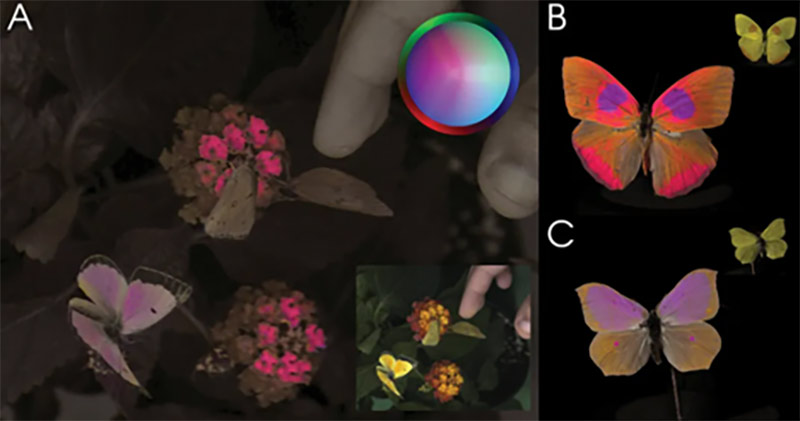By Linda Conlin, Pro to Pro Managing Editor
We know that animals and insects see color differently from humans. Each possesses a unique set of photoreceptors, with sensitivities ranging from ultraviolet through infrared, adapted to their ecological needs. In addition, many animals, such as fish, insects, birds, bats, crabs, and shrimp can detect polarized light. As a result, each animal perceives color differently. For years, scientists have sought to explore those visual domains, daunted by our own visual limitations. Now there’s a tool for researchers or filmmakers to record videos that represent the colors that animals see. Researchers at the University of Sussex UK, and colleagues from George Mason University US, have developed a new camera system which will produce videos that accurately replicate the colors different animals see in natural settings. (Vasas V, Lowell MC, Villa J, Jamison QD, Siegle AG, Katta PKR, et al. (2024) Recording animal-view videos of the natural world using a novel camera system and software package. PLoS Biol 22(1): e3002444.)
Visual stimulation depends on the illumination, the object’s reflectance, and the sensitivity of the receiver’s photoreceptors. Many insects and birds have four photoreceptors, and some reptiles have five. Because human photoreceptors differ from those of animals, we perceive color differently with only three photoreceptors. Multispectral photography provides the opportunity to accurately measure colored patterns in their original state. It relies on taking a series of photos in wavelength ranges that are generally broader than the standard photographs humans can see. Subjects are photographed using a camera sensitive to broadband light, through a succession of narrow-bandpass filters that selectively transmit a portion of the spectrum while rejecting all other wavelengths. In this way, researchers acquire images in regions surpassing the human visual experience, such as in the UV and infrared ranges.
To our eye, the black-eyed Susan appears entirely yellow because it reflects primarily long-wavelength light in the human-visible range. Whereas, to a nectar-seeking bee, the petals appear magenta because they reflect UV in addition to long-wavelength light. By contrast, the central portion of the petals does not reflect UV and therefore appears red. Our skin is uninviting to bees until we apply UV absorbing sunscreen, which makes it appear as bright yellow. Because birds perceive UV, the sky appears as pink or magenta, but they see much more of a rainbow with more indigo and violet. Mice see only two bands of the rainbow, green and a UV band that appears as blue. UV iridescence is a mating cue in orange sulphur butterflies when it becomes visible during flight. And peafowls’ beautiful tail colors are overlaid with UV as magenta.
Using a novel software that the researchers created in Python, the camera system will open new avenues of research for scientists, and allow filmmakers to produce dynamic, 92% accurate depictions of how animals see the world around them, the authors say. The system is built from commercially available cameras, housed in a modular, 3D-printed casing, and the software is available open-source, allowing other researchers to use and build on the technology in the future.










